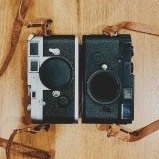VueScan issue: RAW DNGs become much more saturated than TIFF
-
Recently Browsing 0 members
- No registered users viewing this page.
-
Similar Content
-
- 35 replies
- 2,280 views
-
- 2 replies
- 1,146 views
-
- 25 replies
- 840 views
-




Recommended Posts
Join the conversation
You can post now and register later. If you have an account, sign in now to post with your account.
Note: Your post will require moderator approval before it will be visible.